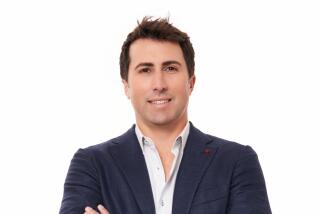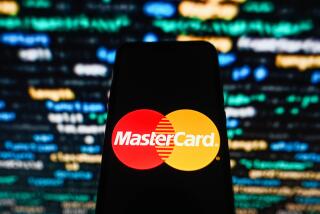End Double Fees at ATMs
- Share via
Thirty years ago, when automated teller machines first appeared, banks told us that these machines would provide 24-hour convenience at a substantially lower cost than brick-and-mortar bank branches. Making this transition was difficult for most consumers, who were used to personalized human teller service. But most people changed their banking habits and the machines sprouted up everywhere.
End of story, right? Wrong. Suddenly, banks are claiming that ATMs are prohibitively expensive to operate and are threatening to reduce their ATM services unless they are permitted to charge extra fees (commonly called ATM surcharges) to customers accessing accounts at other banks through their machines. They argue that, in order to stay afloat, they need to charge two fees every time these consumers try to get their own money from the ATM. (Your bank charges a fee--called a “foreign fee”--when you use another bank’s ATM; it shares that fee with the owner of the ATM. The surcharge is a second fee charged and kept by the owner of the ATM. So, consumers paying a surcharge are paying twice.)
This is an absurd practice. Automatic teller machines save money for banks by reducing the volume of teller service provided by each institution and are a far cheaper way for banks to process transactions. A study by the federal Office of Thrift Supervision reported in American Banker magazine in 1997 found that the average human teller transaction costs a bank $2.93 while the average ATM transaction costs 27 cents. That is why banks deployed more than 125,000 ATMs before double charging was permitted nationwide.
But, after intensive lobbying by big banks, the two largest ATM networks, Plus and Cirrus, on April 1, 1996, ended their long-held ban on ATM surcharges by banks.
The California Public Interest Research Group has released a nationwide survey showing that the percentage of banks charging surcharges has increased dramatically since the lifting of the ban. The study found that 71% of the surveyed 480 banks in 28 states are now surcharging at their ATMs, up from 45% of banks only one year ago. In California, 54% of banks (who own 71% of the state’s ATMs) are now surcharging, up from 44% last year. And big banks are by far the biggest culprits, with 83% of big banks, compared to 65% of small banks, imposing these extra ATM fees.
At its core, ATM surcharging is a thinly veiled attempt by big banks to steal customers from small banks and credit unions. Small banks and credit unions cannot afford large numbers of ATMs of their own, so they depend on network access for their customers to use ATMs nationwide. This was the reason for the formation of ATM networks.
With the imposition of ATM surcharges by nearly every large bank in America, customers of small banks are forced to pay double fees whenever they use an ATM away from home. If enough small bank and credit union customers are forced to switch accounts to big banks to avoid ATM fees, then the big banks, facing less competition, will raise fees on their own customers even more. Every consumer will lose.
There is a role for government in balancing the excessive marketplace power of big banks when their policies hinder fair competition and impose excessive fees on captive consumers. That is why Iowa and Connecticut already prohibit ATM surcharges, and why legislation to do the same is pending in 26 states and Congress.
The D’Amato bill banning ATM double charges will be voted on by the U.S. Senate this year. Congress must stand up for fair competition and protect consumers by banning double ATM charges.
More to Read
Sign up for The Wild
We’ll help you find the best places to hike, bike and run, as well as the perfect silent spots for meditation and yoga.
You may occasionally receive promotional content from the Los Angeles Times.






